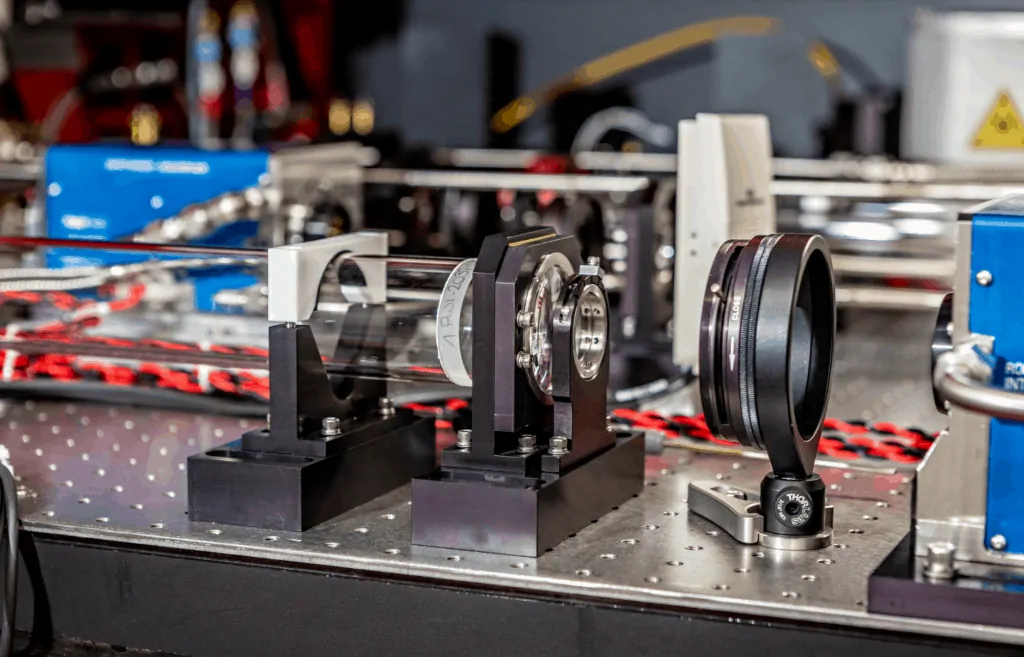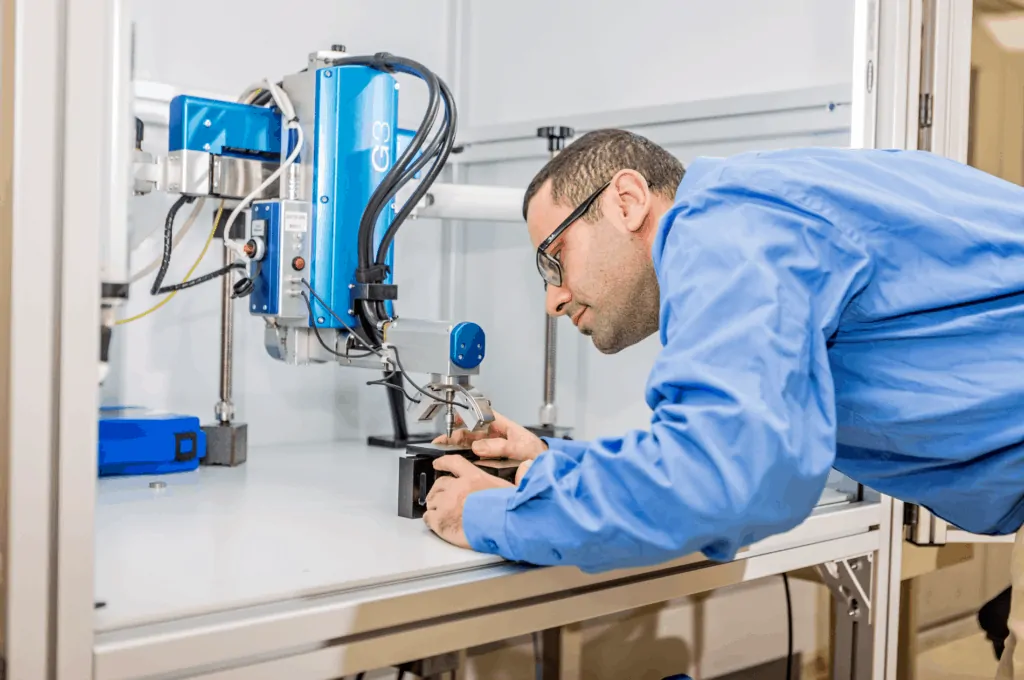Laser peening application development – tips for a better process
Laser peening application development involves sophisticated equipment, physics and optics, so it requires a level of partnership, communication, information-sharing, and expertise to produce predictable results and benefits.
Posted: August 25, 2020
By:
Note: This blog on laser peening application development by David Lahrman, VP-Business Development at LSP Technologies, was originally published as a training column in the international publication, Metal Finishing News, as part of its ongoing effort to provide training columns from select metal surface improvement experts.
Those of us in the metal surface improvement industry work to understand a wide range of alloys, surface technologies, and manufacturing processes in order to solve metal fatigue issues. In the highly specialized field of laser peening, we still need to maintain that broad awareness.
Using lasers to impart compressive residual stress to aluminum, steel, or titanium can multiply the useful life of a wide variety of industrial components. The process provides deep compressive residual stresses to prevent and arrest metal fatigue – whether from foreign object damage or the more intrinsic operating risks of vibration, stress corrosion, high temperatures, or rotational stress. (See types of metal failure.)
The laser peening application development process seeks to provide deep compressive residual stresses to prevent and arrest metal fatigue – whether from foreign object damage or the more intrinsic operating risks of vibration, stress corrosion, high temperatures, or rotational stress.
David Lahrman
LSP Technologies
Laser peening involves sophisticated equipment, physics and optics, so it requires a level of partnership, communication, information-sharing, and expertise to produce predictable results and benefits. In most cases, the laser peening application development process involves three phases of activity:
- Component Design Analysis
- Laser Peening Engineering and Design
- Application Verification and Validation
There are two key tasks of discovery in the Component Design Analysis phase. First, the focus needs to be on the end-game result; that is, understanding the customer’s sometimes challenging metal fatigue issue. That involves a lot of listening and attention to customer data.
The second task in Design Analysis involves communicating exactly how effective laser peening can be to arrive at that endgame. It’s important to be sensitive to where laser peening could best fit into the part manufacturing sequence. For example, if the manufacturer wants to add a plasma spray deposition coating on a part after the laser peening process, the high-temperature plasma process could erase the beneficial compressive residual stresses imparted by laser peening. It’s possible the customer may consider modifying the manufacturing sequence, if the overall process permits.

The endpoint of the Design Analysis phase should be an agreed-upon demonstration plan to provide an initial set of data that will set the stage for the next step.
The logical second phase is Laser Peening Engineering and Design, developing a laser peening treatment to impart the required compressive residual stresses to the component.
This may involve finite element modeling (FEM) to predict both beneficial compressive stresses and the location of compensating tensile stresses, which are always a result of surface enhancement. It is essential to ensure compensating tensile stresses don’t inadvertently reinforce the operational loads on the component. The operating conditions within jet engines, for example, generate dynamic loading stresses on the airfoils, and there are different vibratory modes acting on the part at different operational speeds. Automotive camshafts and connecting rods, to look at other examples, require their own fine-tuned processing areas.
FEM analysis can illustrate laser peening benefits for sophisticated mission-critical parts, but this process may start with smaller and simpler coupons to provide proof of concept. In isolation, coupons display what the residual stress distribution is going to look like and what laser peening conditions can be used to extend the life of the component.
These conditions are called laser peening parameters, and they form a kind of prescription formula to cure metal fatigue issues. One parameter is power density – in general, the higher the power density, the deeper the compressive residual stress penetrates the metal. The power density can vary as a function of the amount of energy, the pulse width (or length of time the laser beam is flowing), and the spot size. The pattern and spacing of laser spots, as well as how they might overlap or repeat, also affects residual stress benefits.

The third phase is Application Verification and Validation. This can involve measuring compressive residual stress levels in a metal coupon or small component with a couple of proven methods such as wire-slitting or X-ray diffraction. Both methods measure the depth and character of the residual stress profile below the surface of metallic components, even with complex geometries. Measuring the residual stress level is a secondary indicator of confirming the potential fatigue benefit. Conducting fatigue tests is the primary method to confirm the benefit of laser peening.
In many cases, customers will conduct their own component fatigue tests to simulate specific operational loads in order to confirm a specific laser peening prescription will produce the desired fatigue benefit in their component.
Detailed production plans can begin after these three phases of application development, always with an eye to achieving consistent processing quality. It’s also important to monitor the life cycle improvements of laser-peened components in actual operation.

Learn more about recent developments at LSP Technologies
- How Laser Peening Enhances Fatigue Life of Aviation Additively Manufactured Components
- +Modern Laser Peening for Material Surface Enhancement
- LSP Technologies delivers Portable Laser Peening System to Airbus
- Laser Peen Forming Applications Create Complex Curves and Shapes
- Laser Shock Peening 2021 Event
Interested in Seeing More?
Tell us about your application, material, or failure mechanism and we will have one of our experts reach out to you. Our extensive library of research and years of experience gives us a unique advantage to apply a finite element analysis to help diagnose the best application for your situation.
